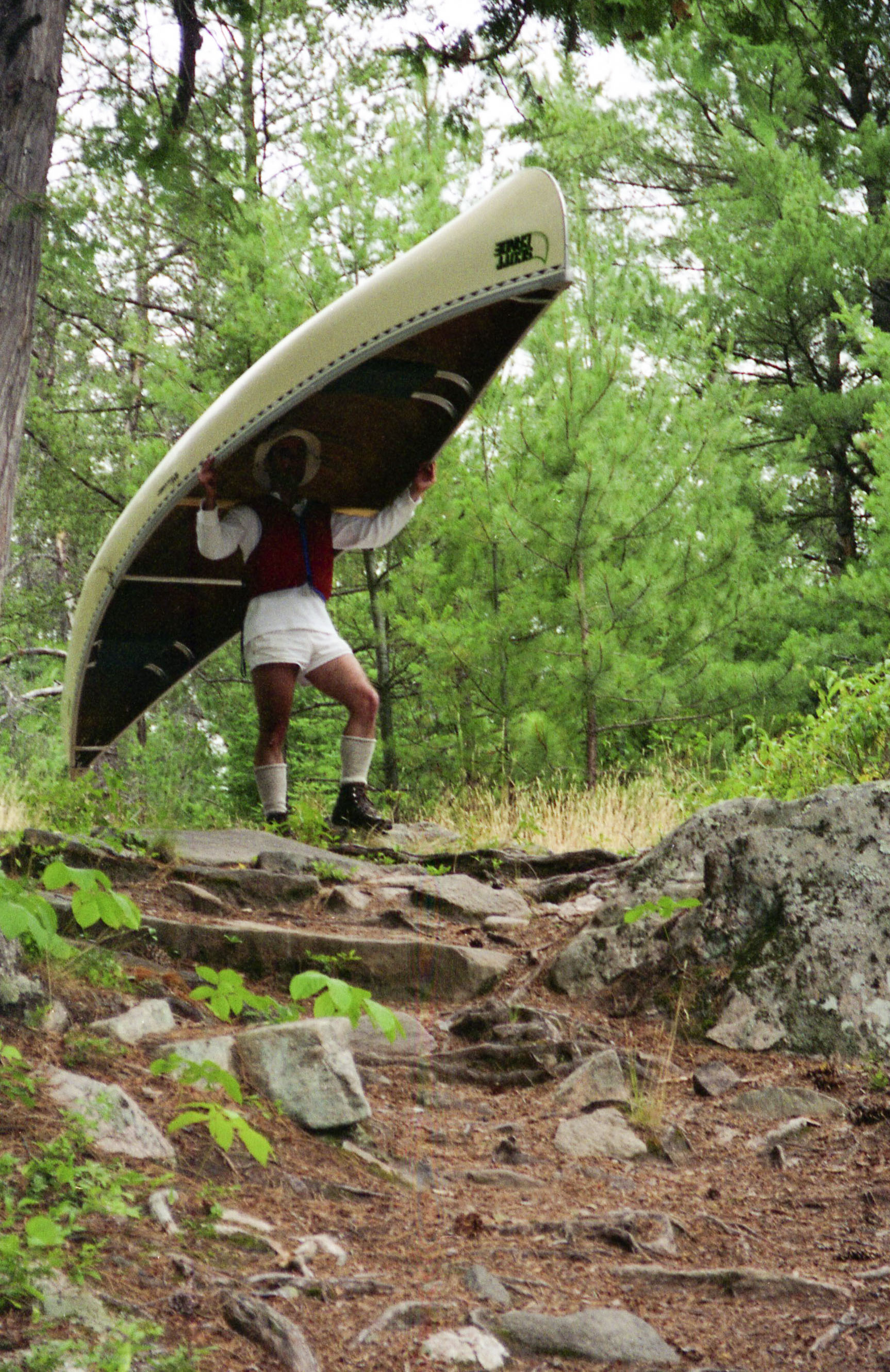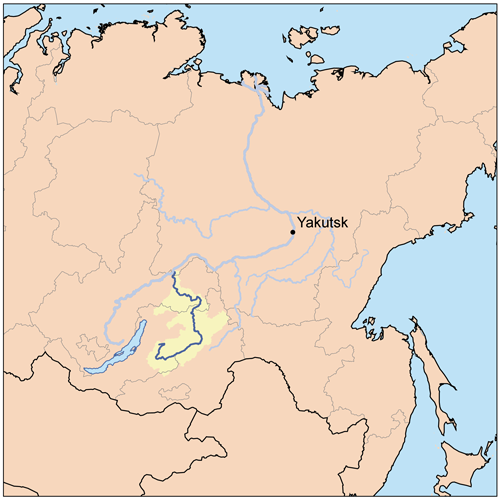|
Yerofei Khabarov
Yerofey Pavlovich Khabarov or Svyatitsky (russian: Ерофе́й Па́влович Хаба́ров (Святи́тский), ; the first name is often spelled Ярофей (Yarofey) in contemporary accounts; 1603 – after 1671), was a Russian entrepreneur and adventurer, best known for his exploring the Amur river region and his attempts to colonize the area for Russia. For background see Russian–Manchu border conflicts. The major Russian city of Khabarovsk, as well as the small town and railway station Yerofey Pavlovich (located on the Trans-Siberian railroad in Amur Oblast) bear his name. A native of the Veliky Ustyug area in the northern European Russia, Khabarov was a manager for the Stroganovs at the saltworks in Solvychegodsk. In 1625, Khabarov sailed from Tobolsk to Mangazeya. Three years later, he left the town with his expedition and reached the Kheta River (eastern part of Taimyr). In 1630, Khabarov took part in a voyage from Mangazeya to Tobolsk. In 1632� ... [...More Info...] [...Related Items...] OR: [Wikipedia] [Google] [Baidu] |
Khabarovsk
Khabarovsk ( rus, Хабaровск, a=Хабаровск.ogg, r=Habárovsk, p=xɐˈbarəfsk) is the largest city and the administrative centre of Khabarovsk Krai, Russia,Law #109 located from the China–Russia border, at the confluence of the Amur and Ussuri Rivers, about north of Vladivostok. With a 2010 population of 577,441 it is Russia's easternmost city with more than half a million inhabitants. The city was the administrative center of the Far Eastern Federal District of Russia from 2002 until December 2018, when Vladivostok took over that role. It is the largest city in the Russian Far East, having overtaken Vladivostok in 2015. It was known as ''Khabarovka'' until 1893. As is typical of the interior of the Russian Far East, Khabarovsk has an extreme climate with very strong seasonal swings resulting in strong cold winters and relatively hot and humid summers. History Earliest record Historical records indicate that a city was founded on the site in the eighth centur ... [...More Info...] [...Related Items...] OR: [Wikipedia] [Google] [Baidu] |
Kheta River
The Kheta (russian: Хета) is a river in Krasnoyarsk Krai in Russia, left composite of the Khatanga River. The river is long. The area of its drainage basin is . Course The Kheta is formed by the confluence of the Ayan and Ayakli, both of which originate in the Putorana Plateau. The Kheta freezes up in late September or early October and breaks up in late May or the first half of June. Its main tributaries are the Boyarka, Maymecha, and Boganida. See also *List of rivers of Russia
Rus ...
[...More Info...] [...Related Items...] OR: [Wikipedia] [Google] [Baidu] |
Portage
Portage or portaging (Canada: ; ) is the practice of carrying water craft or cargo over land, either around an obstacle in a river, or between two bodies of water. A path where items are regularly carried between bodies of water is also called a ''portage.'' The term comes from French, where means "to carry," as in "portable". In Canada, the term "carrying-place" was sometimes used. Early French explorers in New France and French Louisiana encountered many rapids and cascades. The Native Americans carried their canoes over land to avoid river obstacles. Over time, important portages were sometimes provided with canals with locks, and even portage railways. Primitive portaging generally involves carrying the vessel and its contents across the portage in multiple trips. Small canoes can be portaged by carrying them inverted over one's shoulders and the center strut may be designed in the style of a yoke to facilitate this. Historically, voyageurs often employed tump line ... [...More Info...] [...Related Items...] OR: [Wikipedia] [Google] [Baidu] |
Tungir
The Tungir (russian: Тунгир) is a river in Transbaikalia, East Siberia, Russian Federation. It is the third largest tributary of the Olyokma in terms of length and area of its basin. The river is long and has a drainage basin of . The Tungir is known as the Shiroky Brook (ручей Широкий) in its uppermost stretch. Almost all of its basin is in the Olyokma-Stanovik Highlands area. The river is a destination for rafting and tourism. There are two settlements by the river, Tupik and Gulya.Тунгир / '':'' in 30 vols. / Ch. ed. A.M. Prokhorov. - 3rd ed. - M. Soviet Encyclopedia, 1969-1978. [...More Info...] [...Related Items...] OR: [Wikipedia] [Google] [Baidu] |
Olyokma River
, image = Olyokma river.jpg , image_size = , image_caption = View of the river , pushpin_map = Russia Sakha Republic , pushpin_map_size = , pushpin_map_caption= Location in the Sakha Republic, Russia , source1_location = Muroy Range, Olyokma-Stanovik , source1_coordinates = , source1_elevation = , mouth_location = Lena , mouth_coordinates = , mouth_elevation = , progression = , subdivision_type1 = Country , subdivision_name1 = Yakutia, Russia , length = , discharge1_avg = , basin_size = The Olyokma (russian: Олёкма, , ; sah, Өлүөхүмэ, ) is a tributary of the Lena in eastern Siberia. The river gives its name to the Olyokma-Chara Plateau, located to the west of its western bank. History In the summer of 1631, Russian pioneer Pyotr Beketov entered the Olyokma during his first voyage down the Lena and in 1636 he founded the present-d ... [...More Info...] [...Related Items...] OR: [Wikipedia] [Google] [Baidu] |
Vitim River
The Vitim (russian: Витим; evn, Витым, ; sah, Виитим, ; Buryat and mn, Витим, ''Vitim'') is a major tributary of the Lena. Its source is east of Lake Baikal, at the confluence of rivers Vitimkan from the west and China from the east. The Vitim flows first south, bends eastwards and then northward in the Vitim Plateau. Then it flows north through the Stanovoy Highlands and the town of Bodaybo. Including river Vitimkan, its western source, it is long, and has a drainage basin of .Витим (река в Бурят. АССР) It is navigable from the Lena to Bodaybo. Ups ... [...More Info...] [...Related Items...] OR: [Wikipedia] [Google] [Baidu] |
Aldan River
The Aldan (russian: Алдан) is the second-longest, right tributary of the Lena in the Sakha Republic in eastern Siberia.Алдан (река в Якут. АССР) The river is long, of which around is navigable. It has a drainage basin of . The river was part of the River Route to Okhotsk. In 1639 Ivan Moskvitin ascended the rivers Alda ... [...More Info...] [...Related Items...] OR: [Wikipedia] [Google] [Baidu] |
Vassili Poyarkov
Vassili Danilovich Poyarkov (Василий Данилович Поярков in Russian, ? - after 1668) was the first Russian explorer of the Amur region. The Russian expansion into Siberia began with the conquest of the Khanate of Sibir in 1582. By 1639 they reached the Pacific 65 miles southeast of the mouth of the Ulya River. East of the Yenisei River there was little land fit for agriculture, except Dauria, the land between the Stanovoy Mountains and the Amur River which was nominally controlled by China. Poyarkov was sent to explore this land. In 1640 he was in Yakutsk as ''pismenyy golova'' (roughly, in charge of records and correspondence). In June 1643, Poyarkov with 133 men started out from Yakutsk. They were sent by the voevoda of Yakutsk, Peter Golovin. Having no idea of the proper route, Poyarkov traveled up the rivers Lena, Aldan, Uchur, Gonam. Delayed by 64 portages, it was early winter before he reached the Stanovoy watershed. Leaving 49 men to overwinter, h ... [...More Info...] [...Related Items...] OR: [Wikipedia] [Google] [Baidu] |
Kirenga River
The Kirenga () is a river in Irkutsk Oblast in Russia. The name originated in an Evenki word. The length of the river is . The area of its basin is . There are many settlements in the river valley. The Baikal Amur Mainline follows and crosses the Kirenga between Magistralny and Ulkan. Course It is a right tributary of the Lena which flows north between the upper Lena and Lake Baikal. The Kirenga begins in the Baikal Mountains west of Lake Baikal, a few dozen kilometres north of the source of the Lena. The Kirenga marks the eastern limit of the Lena-Angara Plateau. The river flows along the Cis-Baikal Depression, limited by the Akitkan Range to the east. Finally it joins the Lena at the town of Kirensk. The Kirenga is fed mainly by rain. It freezes up in late October to early November and stays under the ice until late April to May. Tributaries Its main tributaries are the Ulkan, Minya, Okunayka and Kutima from the right, as well as the Khanda from the left. [...More Info...] [...Related Items...] OR: [Wikipedia] [Google] [Baidu] |
Kuta River
The Kuta is a Siberian river north of Lake Baikal in Irkutsk Oblast, Russia, that flows into the Lena at Ust-Kut. With its right tributary, the Kupa, it forms a ‘T’ shape with the flat head pointing west and the point at Ust-Kut. The river is long and its basin is about . Course Its source is about above sea level and its mouth, . It flows first west and then south through the taiga and swampland of the Lena-Angara Plateau. At its juncture with the Kupa, it turns east and flows through a relatively narrow and deep valley to Ust-Kut. It is not navigable and is frozen from November to the middle of May. The upper course is practically uninhabited, but is used for forestry. The lower course has a few villages. The Baikal-Amur Mainline from Bratsk eastward runs along its north side for about . The next river to the west is the Ilim. In Cossack times a portage from the Ilim to the Kuta connected the Yenisei and Lena basins. Tributaries The Kupa is a right tributary t ... [...More Info...] [...Related Items...] OR: [Wikipedia] [Google] [Baidu] |
Saltworks
A saltern is an area or installation for making salt. Salterns include modern salt-making works (saltworks), as well as hypersaline waters that usually contain high concentrations of halophilic microorganisms, primarily haloarchaea but also other halophiles including algae and bacteria. Salterns usually begin with seawater as the initial source of brine but may also use natural saltwater springs and streams. The water is evaporated, usually over a series of ponds, to the point where sodium chloride and other salts precipitate out of the saturated brine, allowing pure salts to be harvested. Where complete evaporation in this fashion was not routinely achievable due to weather, salt was produced from the concentrated brine by boiling the brine. Background Earliest examples of pans used in the solution mining of salt date back to prehistoric times and the pans were made of ceramics known as briquetage. Later examples were made from lead and then iron. The change from lead to iron ... [...More Info...] [...Related Items...] OR: [Wikipedia] [Google] [Baidu] |
Town
A town is a human settlement. Towns are generally larger than villages and smaller than city, cities, though the criteria to distinguish between them vary considerably in different parts of the world. Origin and use The word "town" shares an origin with the German language, German word , the Dutch language, Dutch word , and the Old Norse . The original Proto-Germanic language, Proto-Germanic word, *''tūnan'', is thought to be an early borrowing from Proto-Celtic language, Proto-Celtic *''dūnom'' (cf. Old Irish , Welsh language, Welsh ). The original sense of the word in both Germanic and Celtic was that of a fortress or an enclosure. Cognates of ''town'' in many modern Germanic languages designate a fence or a hedge. In English and Dutch, the meaning of the word took on the sense of the space which these fences enclosed, and through which a track must run. In England, a town was a small community that could not afford or was not allowed to build walls or other larger fort ... [...More Info...] [...Related Items...] OR: [Wikipedia] [Google] [Baidu] |







.jpg)